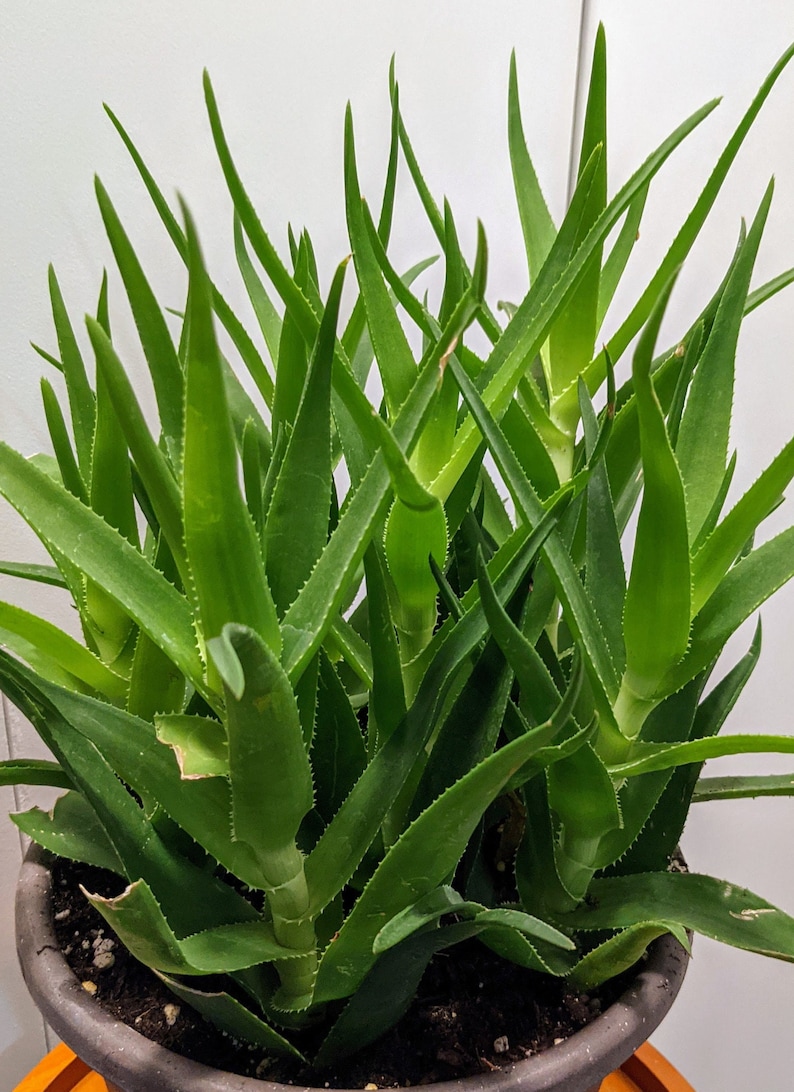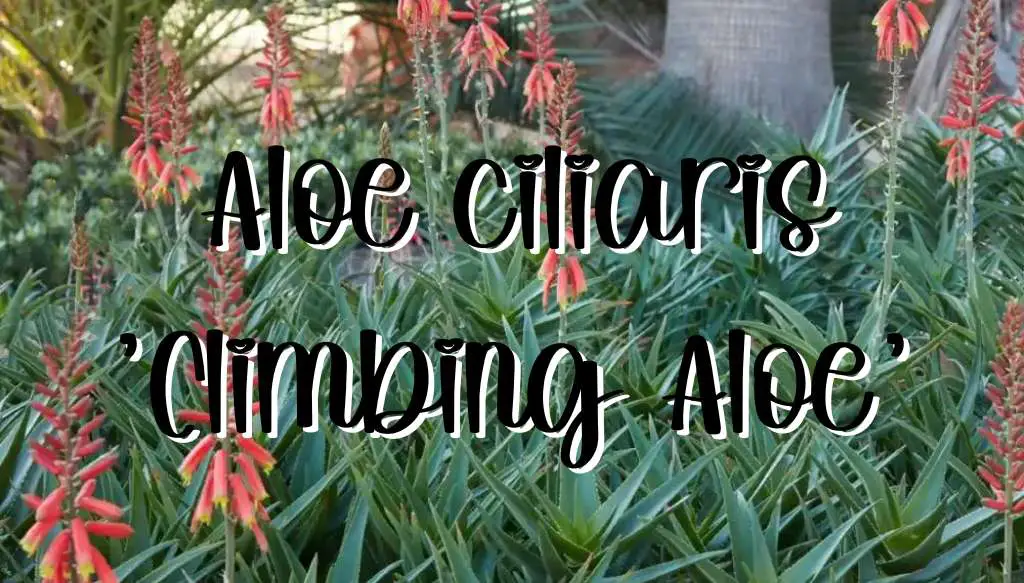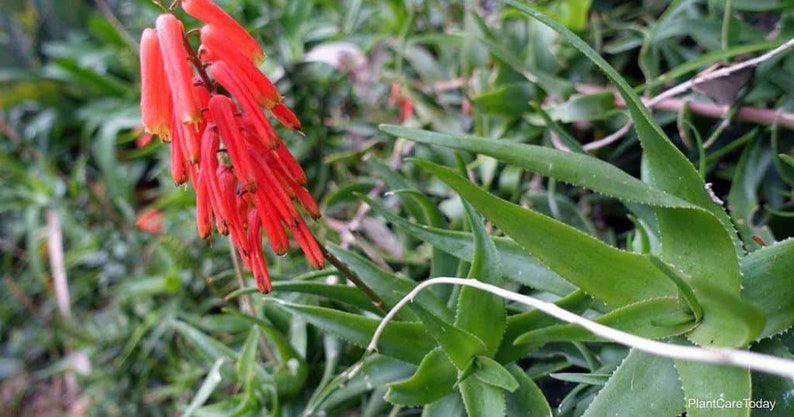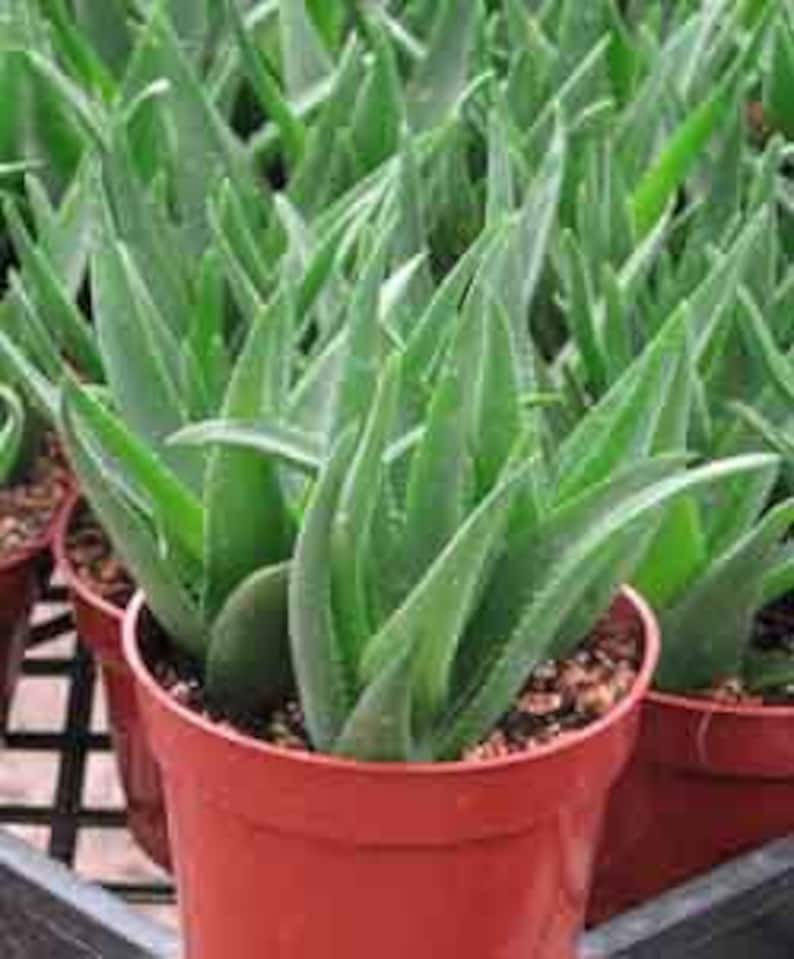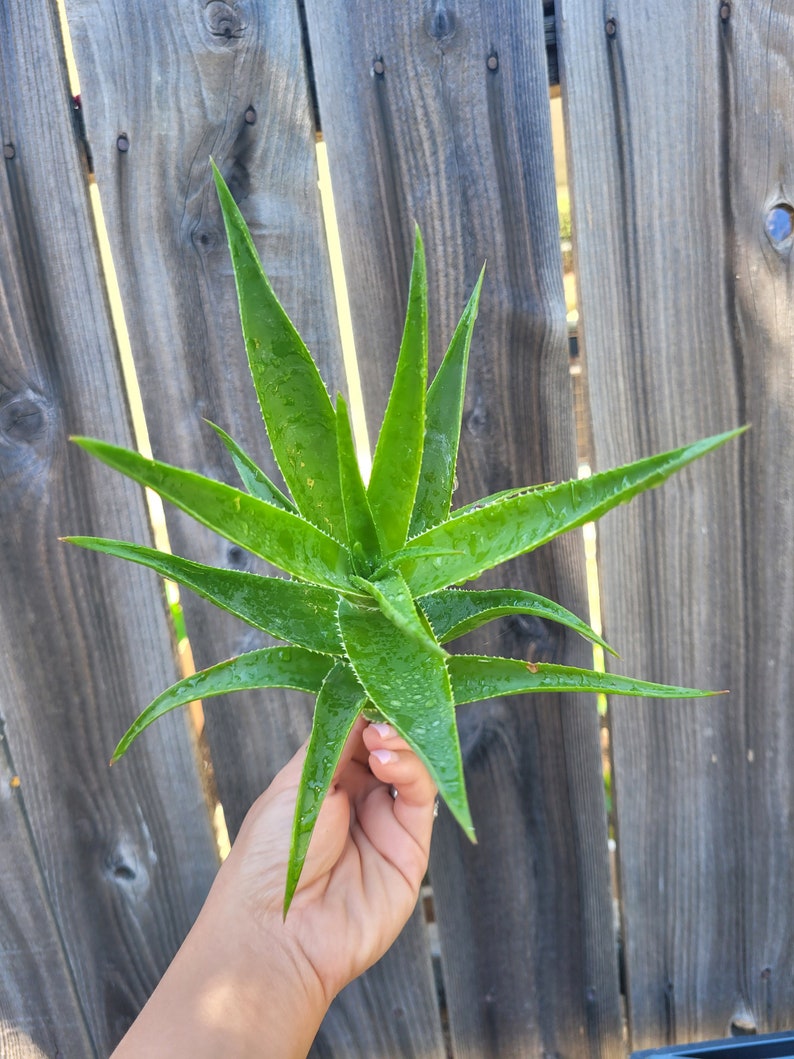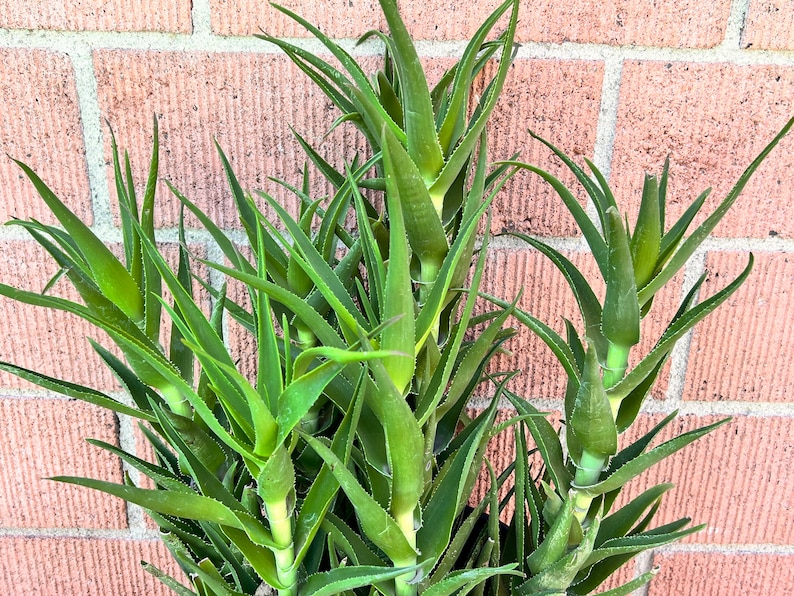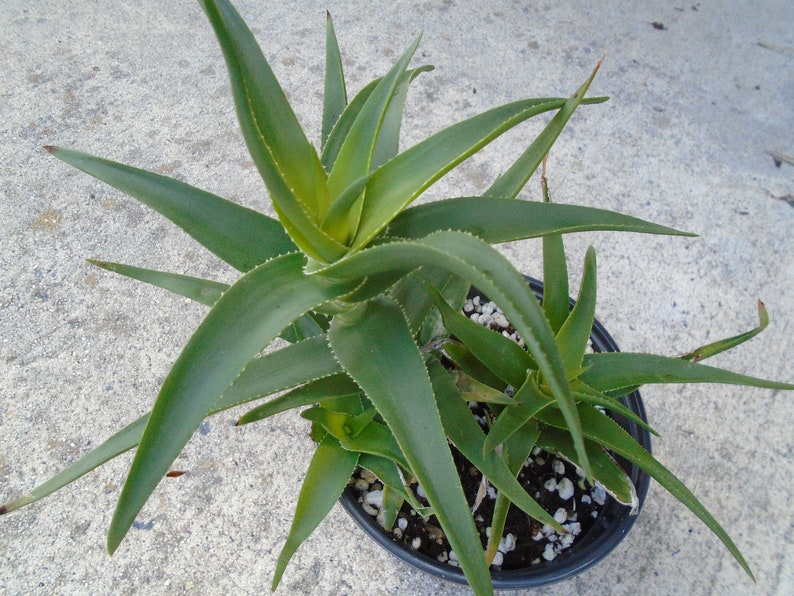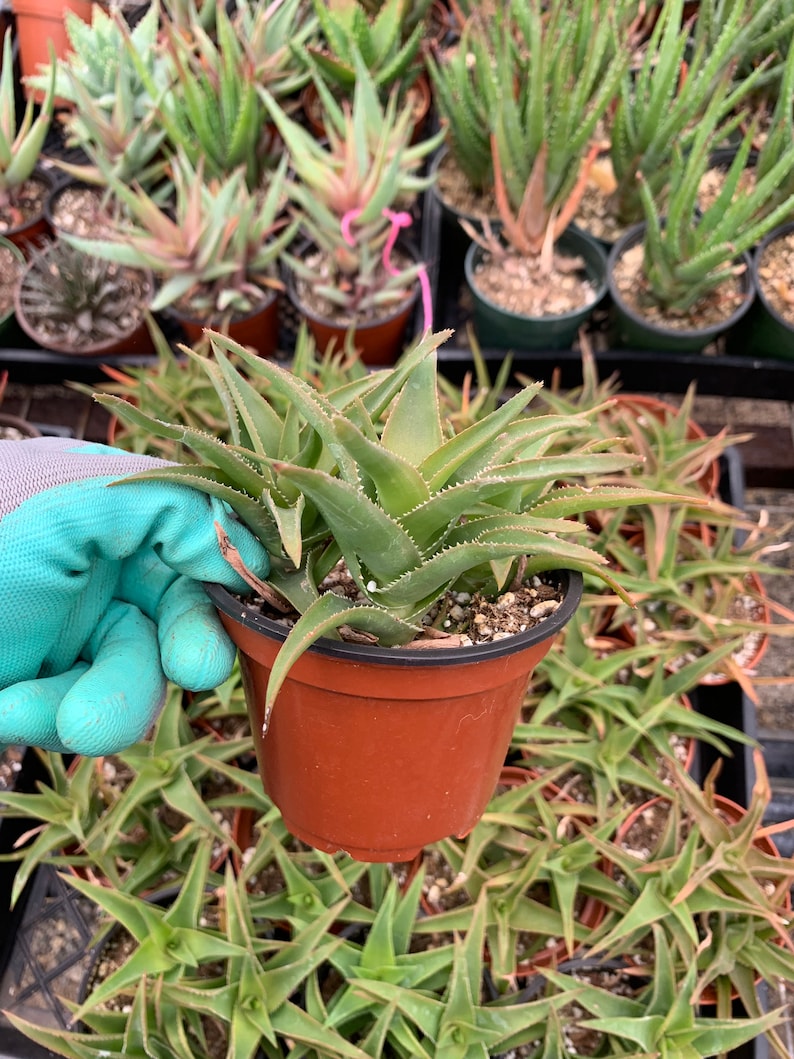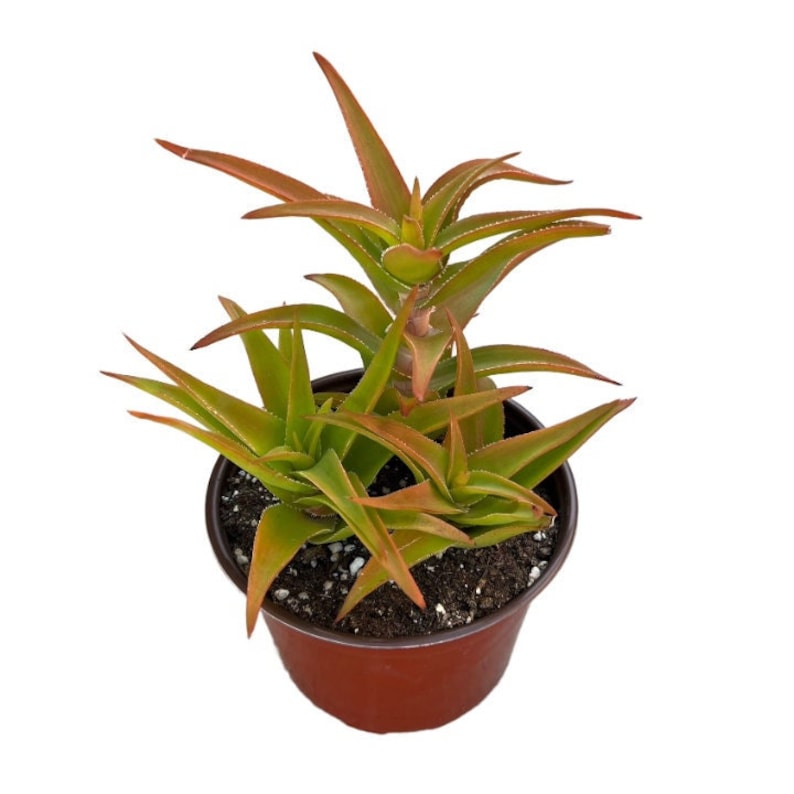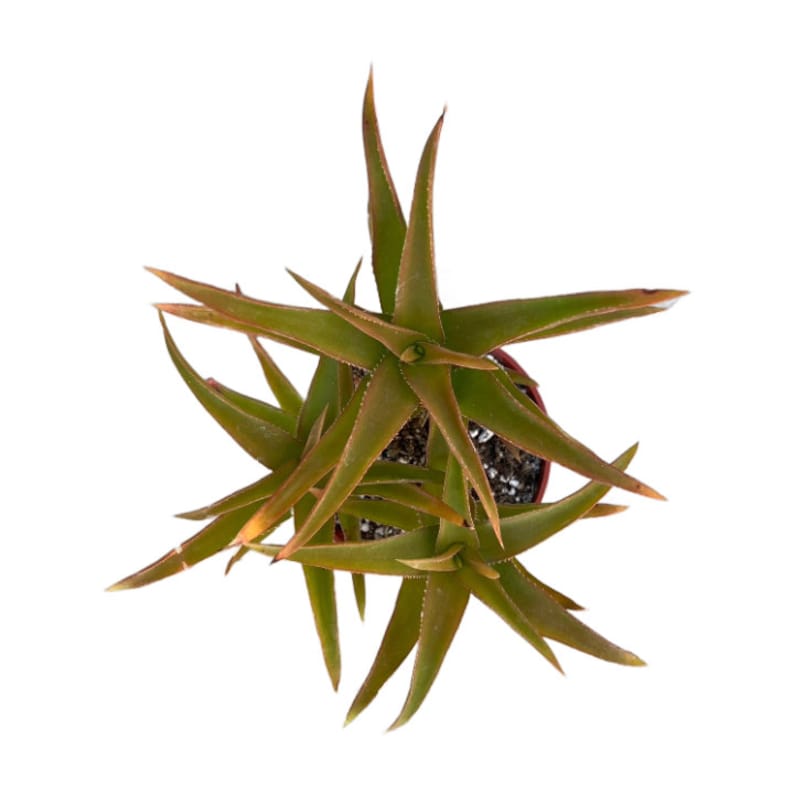Are you looking for a unique and attractive succulent to add to your collection? Look no further than the Aloiampelos ciliaris ‘Climbing Aloe,’ a versatile and visually appealing plant that’s perfect for both beginners and experienced plant enthusiasts alike.
In this comprehensive care guide, we’ll cover everything you need to know about the Climbing Aloe, from its fascinating origin to its ideal growing conditions and potential issues to watch out for. Let’s get started on your journey to becoming an expert on the Climbing Aloe!
Dig in!

Etymology and Other Common Names
The Aloiampelos ciliaris, formerly known as Aloe ciliaris, is a unique succulent belonging to the Aloaceae family. Its scientific name comes from the Latin word “ciliaris,” meaning “fringed with hairs,” referring to the small hair-like growths near the base of its leaves. The plant is also commonly called ‘Climbing Aloe’ due to its climbing, vine-like growth habit.
Appearance and Characteristics
Size and Growth Rate
Aloiampelos ciliaris ‘Climbing Aloe’ is a fast-growing succulent that can reach impressive heights of up to 20 feet when given the proper support. Its leaves are long, narrow, and slightly curved, with small, white teeth along the edges.
The plant has a unique climbing and sprawling growth habit, making it an excellent option for ground cover or as a climbing plant on a trellis or support structure.
When you’re rooting or transplanting your succulents and cacti, use SUPERthrive to help reduce the chance of transplant shock and grow a strong root system.
Flowers, Blooming, and Triggers
Aloiampelos ciliaris ‘Climbing Aloe’ produces beautiful, tubular-shaped orange-red flowers that typically appear in the fall and winter months. These eye-catching flowers often attract hummingbirds and other pollinators, adding an extra element of interest to your garden.
The plant’s blooming is triggered by a combination of factors, including temperature, day length, and water availability. To encourage blooming, cut back on watering during the fall months and expose the plant to cooler nighttime temperatures.
Natural Habitat and Adaptations
Native to South Africa, Aloiampelos ciliaris ‘Climbing Aloe’ thrives in well-draining soil and can be found in a variety of habitats, including coastal plains, rocky slopes, and forests.
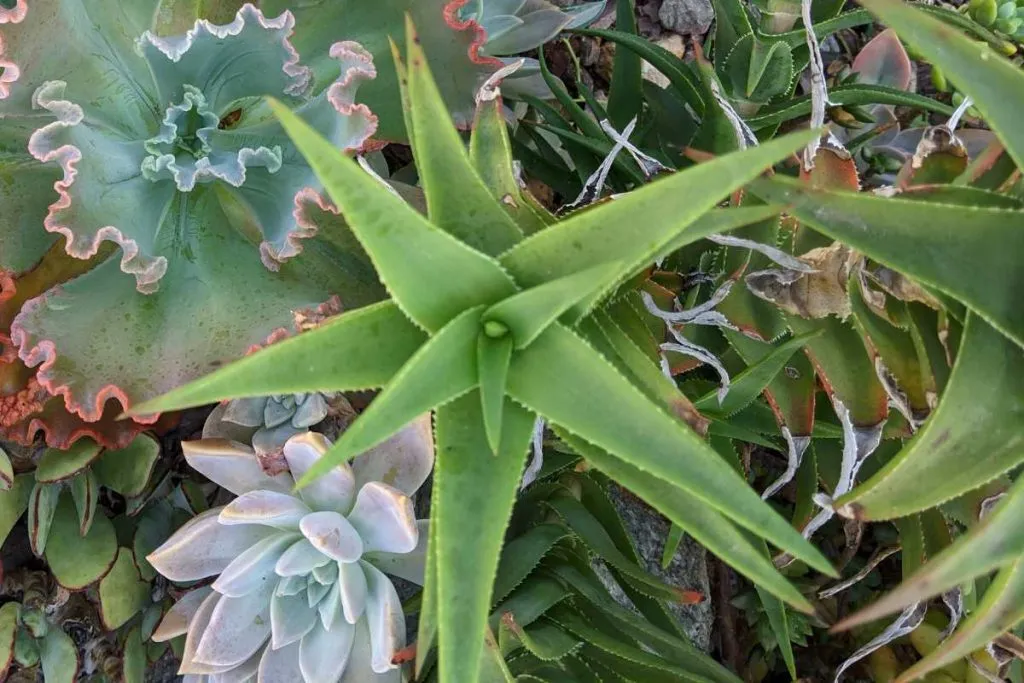
This plant has adapted to its natural environment by developing a shallow root system that allows it to quickly absorb water during infrequent rain events.
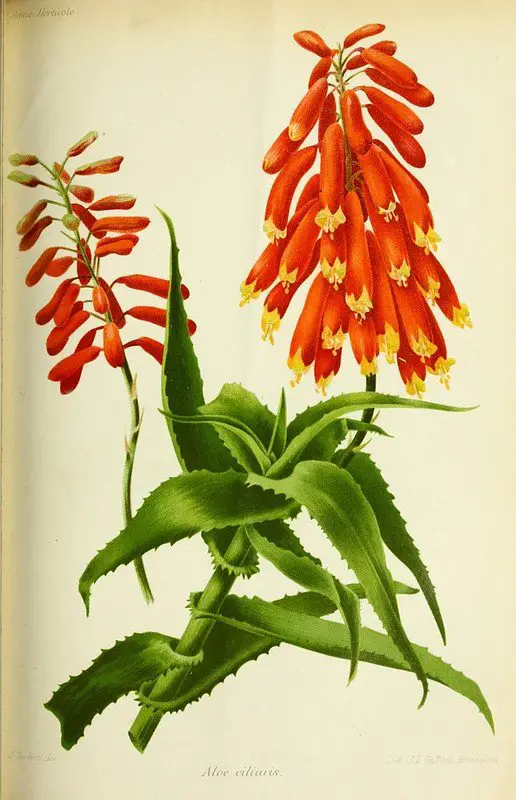
Caring for Your Aloiampelos ciliaris ‘Climbing Aloe’
Light Requirements
Aloiampelos ciliaris ‘Climbing Aloe’ prefers bright, indirect light, making it a suitable plant for both outdoor and some indoor settings.
Outdoors
If you’re growing Aloiampelos ciliaris ‘Climbing Aloe’ outdoors, provide it with partial shade to avoid sunburn. I have some growing in mostly shade and some growing in mostly sun. The ones that get more sun are much much more prolific than the shadier ones.
Indoors
For indoor growth, place the plant near a south or east-facing window to ensure it receives plenty of indirect sunlight. Honestly though, I don’t really think this a great indoor succulent because it really needs lots of light to stay compact.
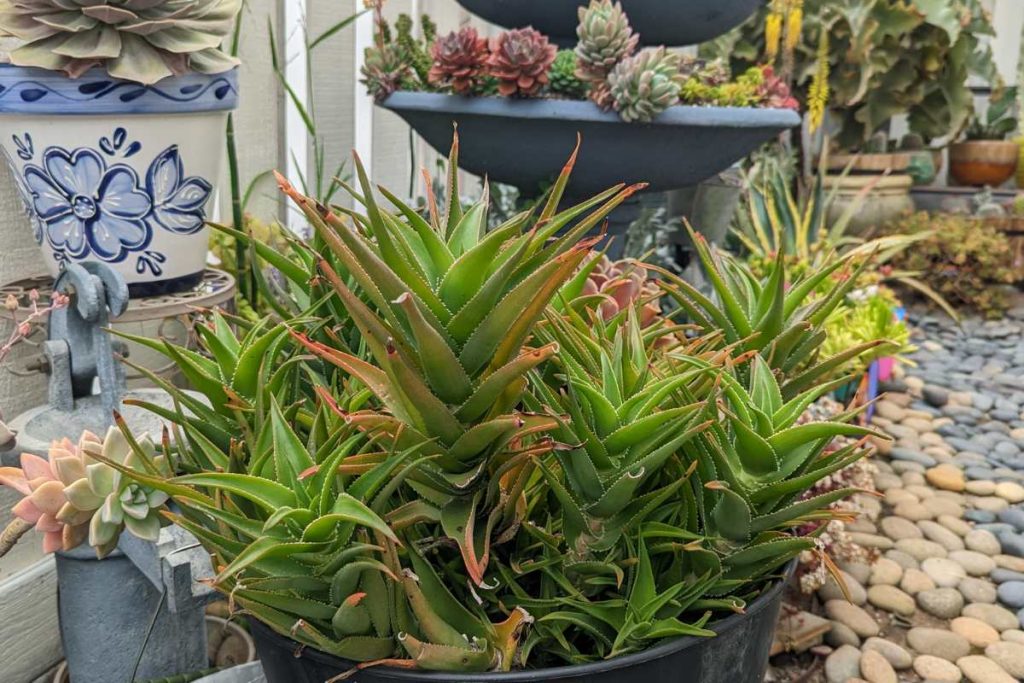
Watering Frequency
Aloiampelos ciliaris ‘Climbing Aloe’ has similar water requirements to most other succulents, preferring a “drench and dry” watering method. Let the soil dry out completely between waterings, which typically means watering every 2-4 weeks, depending on your local climate. Be careful not to overwater, as this can lead to root rot and other issues.
However, always wait for your succulents to show signs that they need water before watering them. Look for dull, wrinkled leaves in addition to dry soil. Since they store water in their leaves, they can go much longer than houseplants without water.
I always say that if you love watering plants every day, succulents are not for you.

Consider amending your soil with Bonsai Jack’s gritty mix to ensure your succulent soil drains quickly to prevent it from staying moist for too long. Source: Etsy
Fertilization
Fertilize your Aloiampelos ciliaris ‘Climbing Aloe’ sparingly, using a diluted, water-soluble, balanced (10-10-10) fertilizer specifically designed for cacti and succulents. Apply the fertilizer once in the spring and once in the summer, during the active growing season.

Succulent fertilizer available to purchase on Etsy.
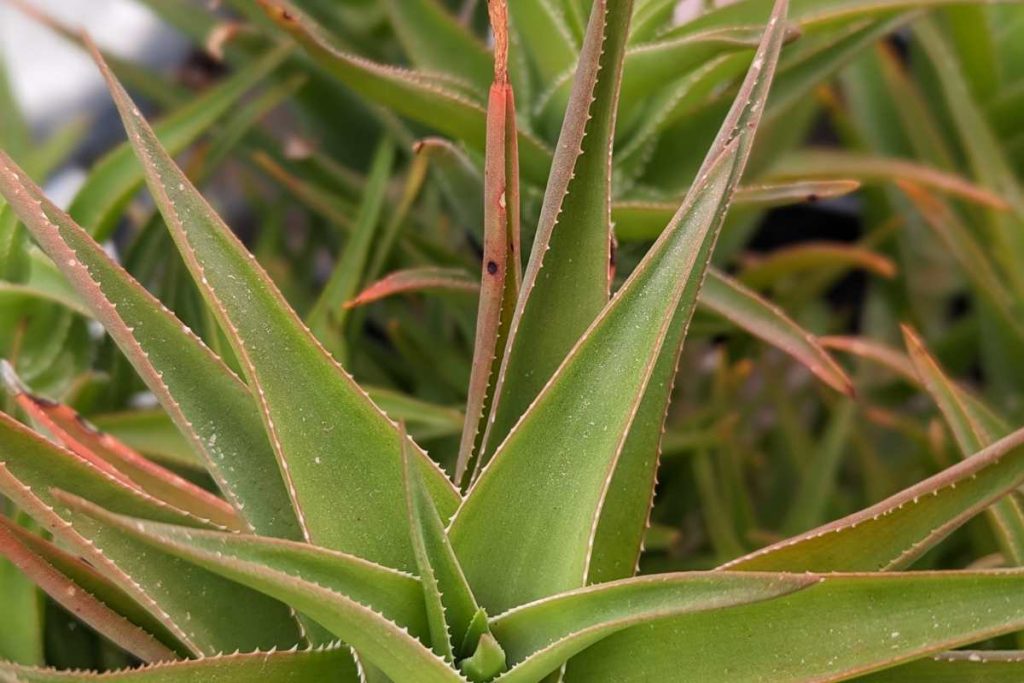
Cold Hardiness and Temperature
Aloiampelos ciliaris ‘Climbing Aloe’ is cold hardy down to about 25°F, but it’s best to protect it from temperatures below freezing. If you live in an area with freezing winters, consider growing your Climbing Aloe in a container so that you can bring it indoors during the coldest months.
Growing Indoors
To grow Aloiampelos ciliaris ‘Climbing Aloe’ indoors successfully, ensure it has ample sunlight and proper drainage. Use a well-draining cactus mix and a pot with drainage holes to prevent water from sitting in the bottom of the container. If your indoor space lacks sufficient natural light, supplement with a grow light to keep your plant healthy and happy.
Pruning and Dormancy
Aloiampelos ciliaris ‘Climbing Aloe’ may need occasional pruning to control its size and promote a bushier growth habit. Remove any dead or damaged leaves and trim the plant back as needed. The plant’s dormancy period typically occurs in the summer months, during which time you should reduce watering to help encourage blooming in the fall and winter.
Propagation
Propagating Aloiampelos ciliaris ‘Climbing Aloe’ is relatively easy and can be done through stem cuttings or division. To propagate from stem cuttings, take a healthy cutting from the plant, allow it to callus over for a few days, and then plant it in well-draining soil. For division, carefully separate the plant’s offsets or pups and replant them in individual containers.
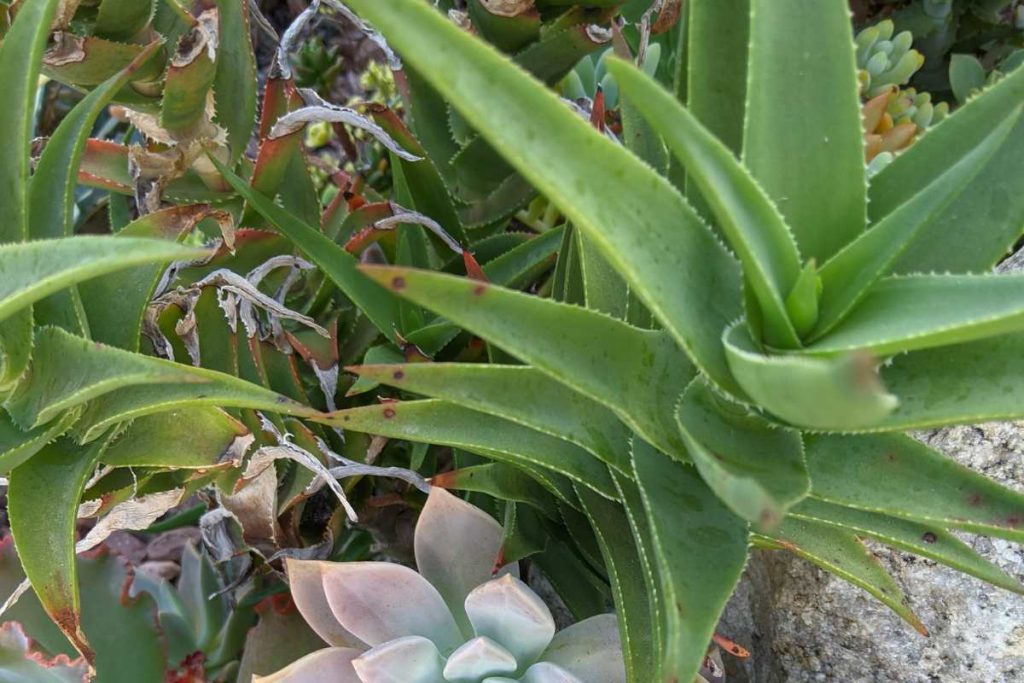
Common Problems and Pests
Aloiampelos ciliaris ‘Climbing Aloe’ is relatively pest-resistant, but it can occasionally attract mealybugs, scale insects, or spider mites. Keep an eye out for signs of infestation, such as discolored or damaged leaves, and treat any issues with insecticidal soap or neem oil. Overwatering can lead to root rot, so be sure to follow the recommended watering schedule and use well-draining soil to prevent issues.
Fix the pest problem on your succulents and cacti with these popular insecticides.
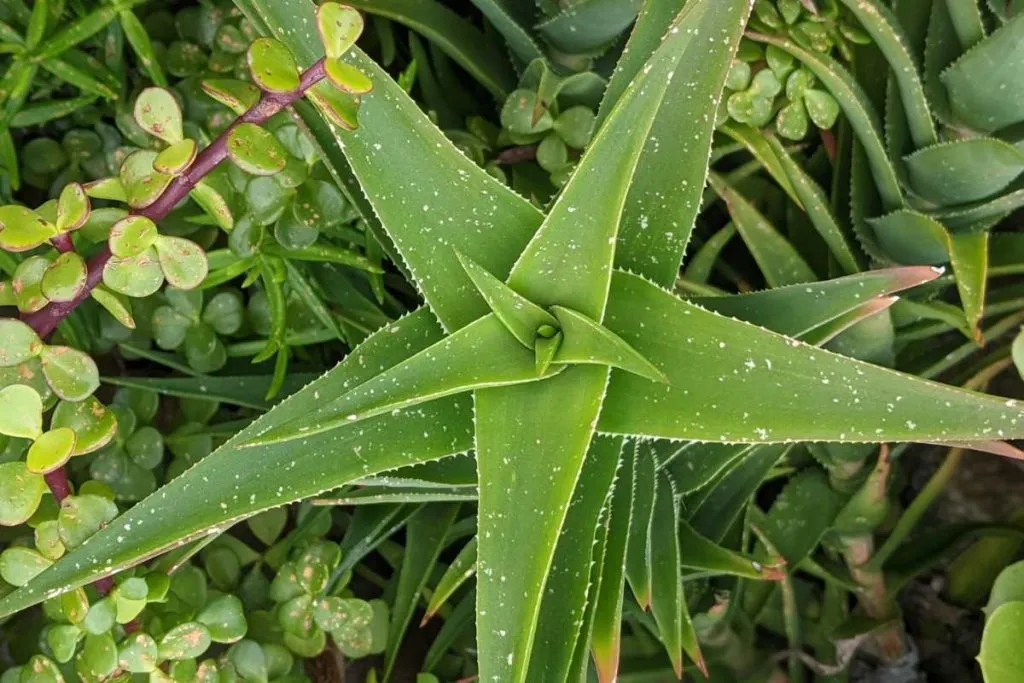
Toxicity and Medicinal Properties
While Aloiampelos ciliaris ‘Climbing Aloe’ is not considered toxic to humans, it can be harmful to cats and dogs if ingested in large quantities. Always be cautious with pets around your plants and consult your veterinarian if you suspect your pet has ingested any part of the Climbing Aloe.
It’s worth noting that Aloiampelos ciliaris ‘Climbing Aloe’ does not possess the same medicinal properties as its more famous cousin, Aloe vera. However, it still makes a beautiful and unique addition to your garden or indoor plant collection.
Comparing Climbing Aloe to Aloe Vera
While both Aloiampelos ciliaris ‘Climbing Aloe’ and Aloe vera belong to the same family and share some visual similarities, these two plants have distinct differences in terms of growth habits, care requirements, and uses.
Aloe vera is known for its medicinal properties, including soothing burns and aiding in skin care, while Aloiampelos ciliaris ‘Climbing Aloe’ is primarily grown for its ornamental value. Additionally, the Climbing Aloe’s unique growth habit sets it apart from Aloe vera, which tends to grow in a more compact, rosette-like pattern.
Jump on over to this post to learn more about the benefits of Aloe vera and how wonderful this plant is.
Ready to move ‘Climbing Aloe’ from your wishlist to your succulent collection?
Buy one from a small business on Etsy by clicking on the image below!
